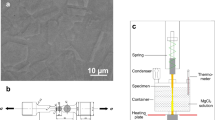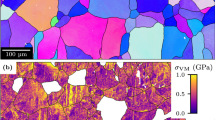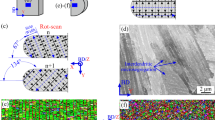Abstract
DURING an investigation of the structure of a hardened 1½ per cent chromium steel, the presence of a small amount of retained austenite was observed in the microstructure. Examination of this material by the glancing-angle X-ray diffraction technique revealed retained austenite on a surface mechanically polished and etched for micro-examination, whereas retained austenite could not be found on the surface of a fracture produced by fatigue, or on a freshly produced brittle fracture surface.
This is a preview of subscription content, access via your institution
Access options
Subscribe to this journal
Receive 51 print issues and online access
$199.00 per year
only $3.90 per issue
Buy this article
- Purchase on Springer Link
- Instant access to full article PDF
Prices may be subject to local taxes which are calculated during checkout
Similar content being viewed by others
References
Averbach, B. L., Lorris, S. G., and Cohen, M., Trans. Amer. Soc. Met., 44, 746 (1952).
Author information
Authors and Affiliations
Rights and permissions
About this article
Cite this article
PATEMAN, L., PEISER, H. An X-Ray Diffraction Study of the Transformation of Retained Austenite by Fracture. Nature 171, 696–697 (1953). https://doi.org/10.1038/171696a0
Issue Date:
DOI: https://doi.org/10.1038/171696a0
Comments
By submitting a comment you agree to abide by our Terms and Community Guidelines. If you find something abusive or that does not comply with our terms or guidelines please flag it as inappropriate.



